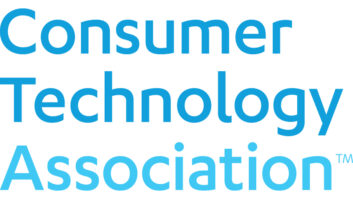
Each year around the holidays, NPD provides what we have come to call the Baker’s Dozen — a list of 13 predictions for the holiday season, as it relates to technology products and retail trends. While the holidays are not yet upon us, we’ve compiled a special summer edition of the Baker’s Dozen that provides a look at what’s worth watching in technology and how the overall retail landscape is shaping up for the rest of 2017, Holiday 2017, and beyond.
1. The New Channel Value — Solutions vs. Transactions
Technology retail success is no longer dependent on success in the brick-and-mortar or e-commerce channels. We’re beyond building expertise in one or the other; winners must dominate one and exploit the other. Success is a function of whether a channel adds efficiency to the purchase transaction or offers true incremental value with a solution.
2. Retail in an Age of Product Disruption
New products and new brands are reshaping and redefining selling motions. Brands have to think about new form factors at different price points across both mature and high-growth markets, while also optimizing across different retail formats. Retail has to add value, as new products change the way consumers interact with purchasing, and the value proposition of these products shift consumer views of the purchase experience.
3. The End of Price Erosion
Share growth is no longer about pushing boxes. Technology has been traditionally about unit volumes, unit share and leveraging the power of the mass market. Well, the mass market is here, and share strategies must change. Today, the only way to growth is through more dollars per unit. Price increases are never a straight line, and to be successful they must impact both premium and entry level products.
4. The Age of The Early Adopter
Today’s growth products are squarely in the early adopter wheelhouse. According to NPD’s “Future of Tech Report,” we found the greatest amount of anticipated tech industry spend through 2018 (43 percent) stems from “Tech Super Consumers.” Yet this segment makes up only 8 percent of the population. It’s fi ne to focus on the “super consumer” today, but keep in mind: The next 40 percent of consumers (who also spend 40 percent of the dollars) need to enter the market as well. The industry must make innovation relevant for the masses in order to grow emerging markets.
5. Innovation Paradox
Along with industry interest and excitement created with product innovation comes stress and uncertainty for the retailer, as well as consumer hesitation and indecision around the purchase.
6. Product in an Age of Retail Disruption
As products are becoming more complicated, channels need to become simpler. Don’t be a transaction, be a solution that integrates. Products need to embrace all available channels to their consumers, especially focusing on ones that best highlight their product benefits. Solution channels vs. transaction channels are a critical choice for the next set of innovative products, just as they were for the last.
7. Death of Technology Incrementalism
Improvements on the margin (bigger, better, cheaper, faster) don’t drive consumer interest or passion anymore. These days, it’s a “go big or go home” mentality, where truly innovative technology products can’t just be better. They must offer new form factors, experiences, and interfaces that will get consumers excited and willing to spend.
8. Preparing for the Tidal Wave
Unprecedented product change is upon us over the next five to 10 years. Get ready for foldable phones, wallpaper televisions, VR movies, AR entertainment, driverless cars, anticipatory virtual assistants, self-controlled homes, and sensor-based health and tracking. And selling these products the same way as the last generation of products will not be a successful strategy.
9. Demographics Matter Less And Less
Mature markets homogenize the ownership and purchase base so that we’re all really tech buyers. It’s no longer about demographics; it’s more about personal hardware use. Early adopters and mainstream consumers are a diverse group. The value consumers receive from the next generation of products will be very different as well — more focused on the product and the activity it enables, and less focused on the individual consumer.
10. Ownership and Installed Bases Matter More and More
The size of the installed base determines the value of both innovation and new technologies, as well as the stream of value (and the replacement value) the industry can expect. Hardware brands must find ways to supplement their installed base penetration with other services that power the hardware.
11. Long-Term Growth Strategies in a Stagnant Market
New categories are not sufficiently mature to make up for market challenges in the most mature, highest value categories. High-growth categories are not growing fast enough to offset declining spend from mature, low-growth categories.
12. 2017 Holiday Outlook
Holiday success for the technology industry has coasted on television sales for years. But, now that televisions are not growing at the same rate, their legacy remains a heavy burden on future holiday seasons. The industry must find new demand drivers for holiday success.
13. B-to-B and B-to-C Product Lines Continue to Blur
Innovation, robustness, form factor, and blurring of personal and professional makes it hard to keep products apart. In the ’90s, most technology started in B-to-B and migrated to B-to-C. Today, most new cool technologies begin in B-to-C and migrate to B-to-B. More and more of the growth areas (for example VR and drones) have just as much value or more in B-to-B as they do in B-to-C.
Stephen Baker is VP/industry analyst, consumer electronics and technology, for The NPD Group.













